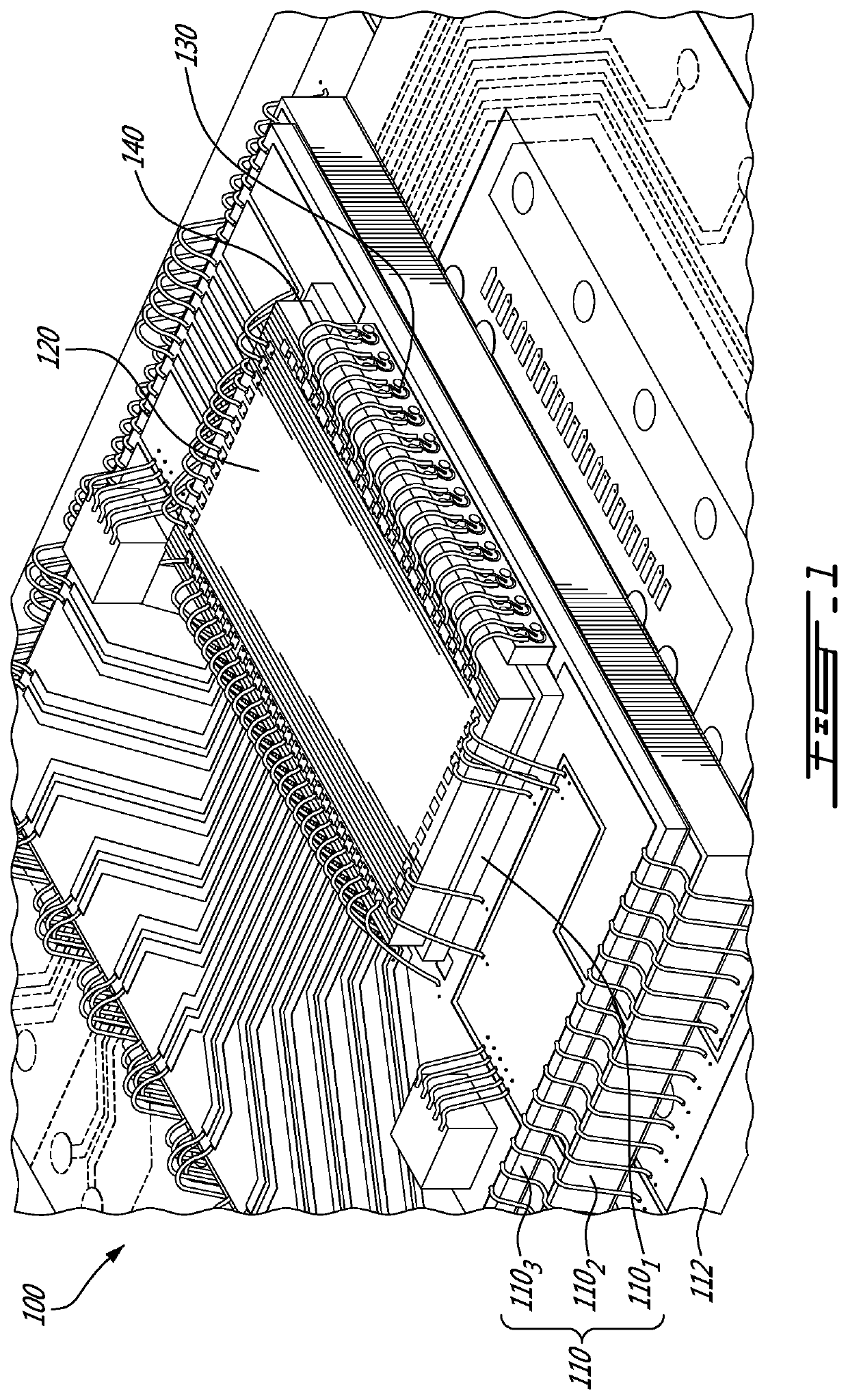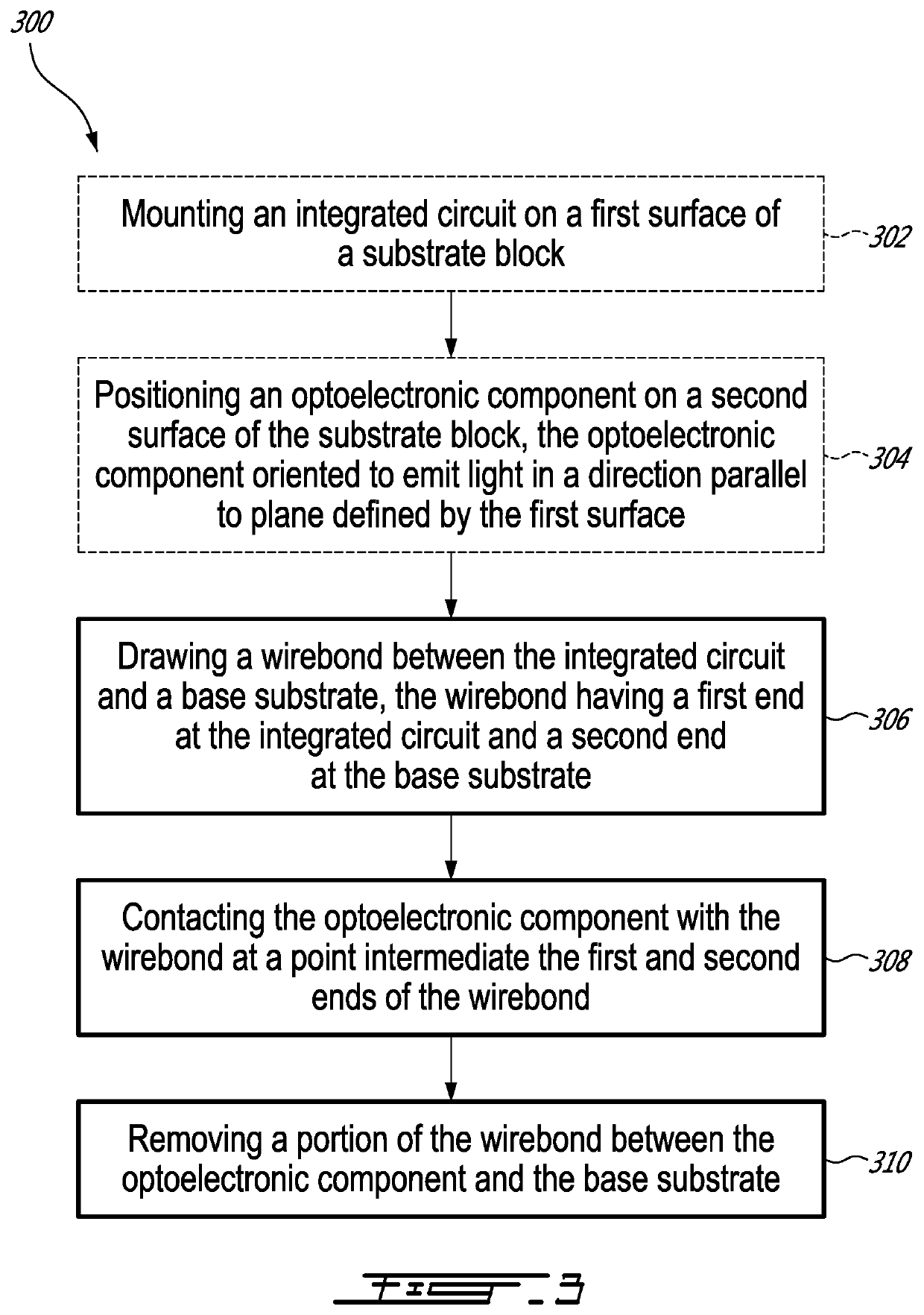Wirebonding for side-packaged optical engine
a side-packaged, optical engine technology, applied in the direction of electrical appliances, basic electric elements, instruments, etc., can solve the problem of combining light to or from optoelectronic components into fiber optic cabling
- Summary
- Abstract
- Description
- Claims
- Application Information
AI Technical Summary
Benefits of technology
Problems solved by technology
Method used
Image
Examples
Embodiment Construction
[0032]There is described herein a method for connecting an integrated circuit and an optoelectronic component using wirebonding. In the prior art, the method can involve a very complicated kinematic, gimbaled mount inside a wirebonding machine where the part is rotated and moved between the first and second bond attach. Instead, there is described herein a simplified, two-step method. The method comprises having one or more wirebonds fully attached in one plane, and then the entire part is re-placed in a second orientation so that a bond-and-cut operation on the wirebond can be made by attaching a new portion of the wirebond to a new location on the second plane. This is followed by a third action to remove the unrequired portion of the wirebond.
[0033]With reference to FIG. 1, there is shown an optical engine 100 configured to produce laser light, for example a laser-based optical signal. The optical engine 100 comprises at least one substrate block 110, an integrated circuit 120, a...
PUM
| Property | Measurement | Unit |
|---|---|---|
| angle | aaaaa | aaaaa |
| angle | aaaaa | aaaaa |
| angle | aaaaa | aaaaa |
Abstract
Description
Claims
Application Information
 Login to View More
Login to View More - R&D
- Intellectual Property
- Life Sciences
- Materials
- Tech Scout
- Unparalleled Data Quality
- Higher Quality Content
- 60% Fewer Hallucinations
Browse by: Latest US Patents, China's latest patents, Technical Efficacy Thesaurus, Application Domain, Technology Topic, Popular Technical Reports.
© 2025 PatSnap. All rights reserved.Legal|Privacy policy|Modern Slavery Act Transparency Statement|Sitemap|About US| Contact US: help@patsnap.com



